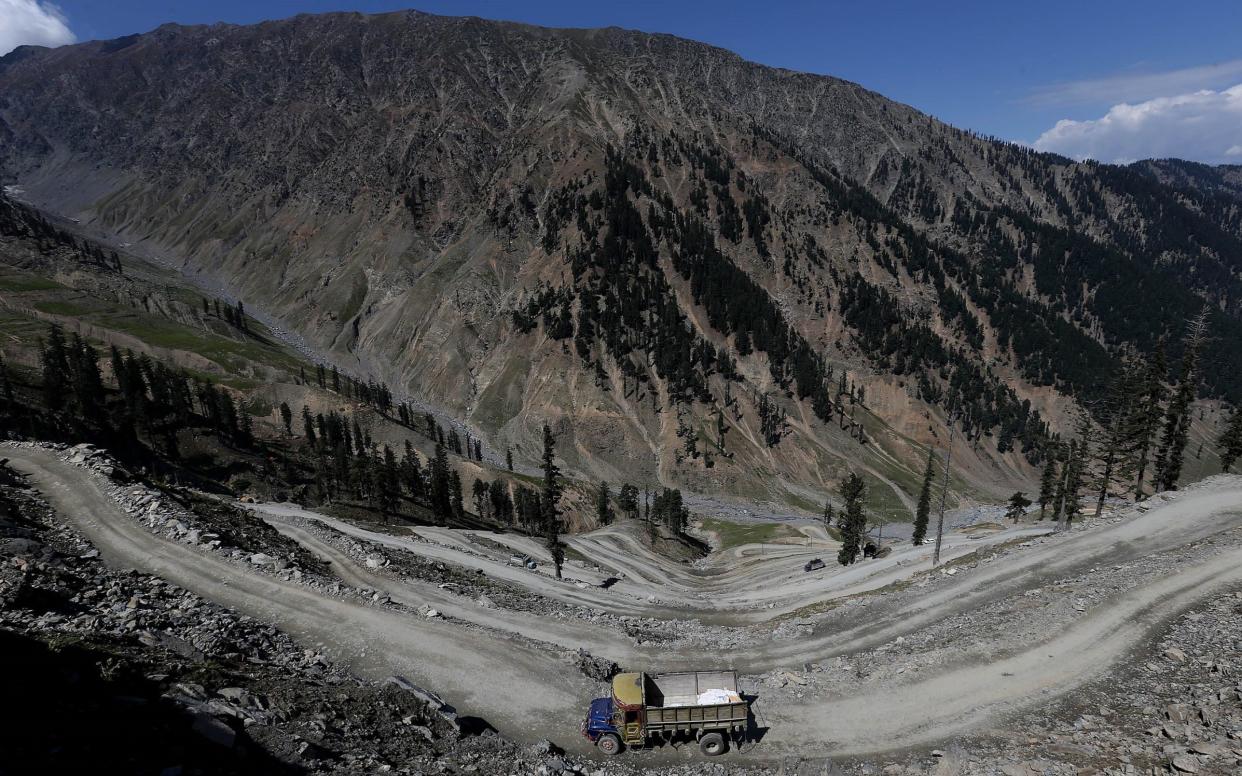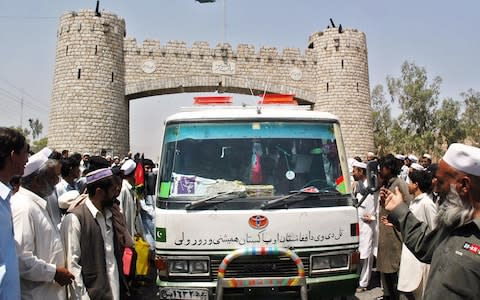Perilous Khyber Pass to become four-lane express way to boost trade between Pakistan and Central Asia

The historic Khyber Pass, which has acted for centuries as a gateway for armies and traders crossing between Afghanistan and the Indian sub continent, is to be given a new road straightening its steep inclines and perilous curves.
As one of the most celebrated strategic routes in the world, it has seen the invading forces of Alexander the Great, the Persians, Mughals, Afghans and British all march through en route to conquest.
Yet the winding curves and steep slopes of the pass linking Peshawar to the Afghan border are now considered to be slowing modern-day trade between Pakistan and Central Asia.
The World Bank has agreed to fund a $480m (£360m) project which will place a new four lane express way at the heart of an economic corridor through the Khyber Pass.
By reducing the gradient of the route, and easing some of its tightest curves, engineers say they can ease the journeys of hundreds of trucks and spur trade by cutting transport time and costs.
Truck drivers braving the current road alternately crawl uphill at little more than walking pace, or nervously edge downhill with their foot on the brake as they wrestle to stay in control, said Baher El-Hifnawi, the World Bank team leader.

Stretches of the current road, which is largely one lane each way, have a gradient of more than 10 per cent.
He said: “The first time I visited, I said why are the trucks not moving, I was way back on some hill and I realised it was moving very slowly. Then if they are moving down, their foot is on the break.”
The new road will add to the existing 25-mile route, but by easing slopes and curves it is hoped it will still halve the journey time from the border to Peshawar.
“We are adding five miles in the new alignment in order to make the new gradients more gradual. They are not going to exceed six per cent.”
Around 700 trucks each day are thought to pass over the border at Torkham.
Fayyaz Shinwari, a 30-year-old truck owner from the town of Landi Kotal said recent refurbishment of the road had helped, but it was still prone to floods and many trucks have gone over the side while overtaking.
He told the Telegraph: “In the rainy season there are flash floods and drivers have to wait until the waters have gone down".
There are hopes the road will become part of a major trading corridor linking Pakistan's sea port with the markets of Central Asia.
Mr El-Hifnawi said: “This is a major trade route from Karachi, going through Peshawar, going through Torkham, continuing through Afghanistan, going to Jalalabad, and into Kabul, extending all the way to Dushanbe and beyond.”
Recent improvements in security following Pakistani operations against extremist militants had reduced security fears about building the road, he said.
But the success of the project still relies on border being open and the state of the road in Afghanistan.
The Torkham border point has often become a flashpoint between the wary neighbours and been closed in response to disputes.

 Yahoo News
Yahoo News 
